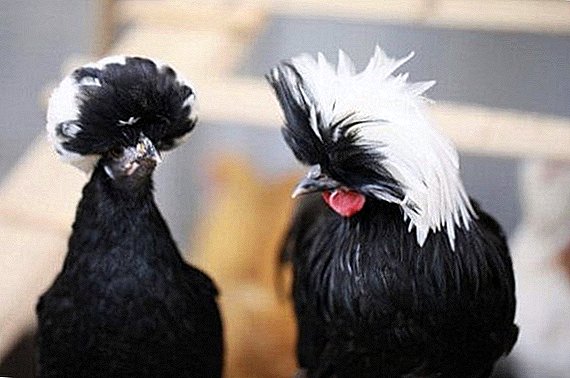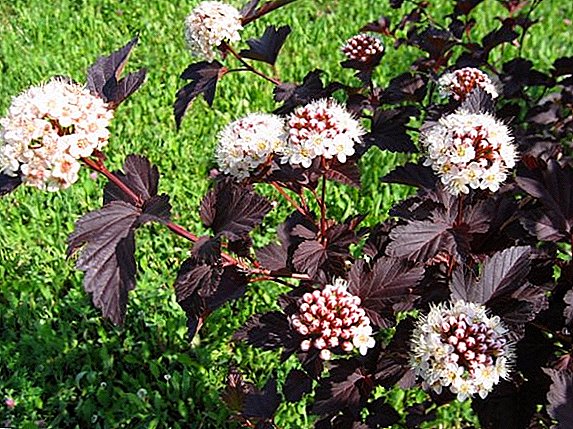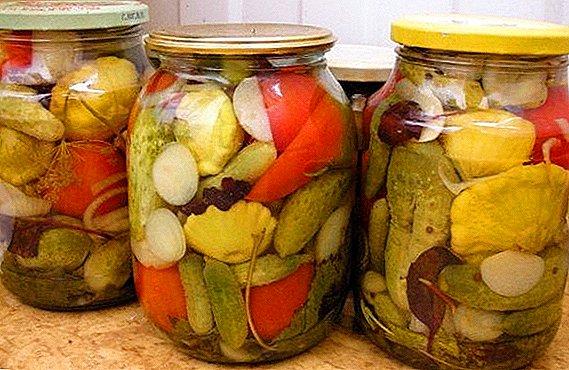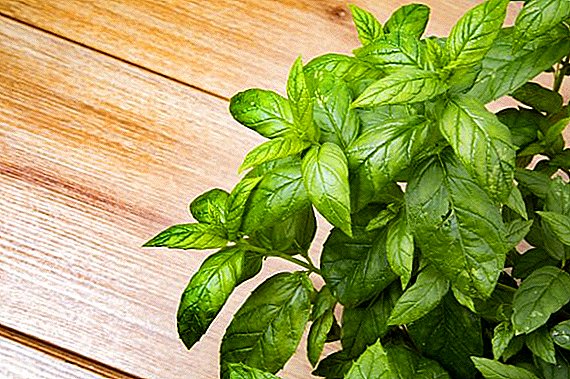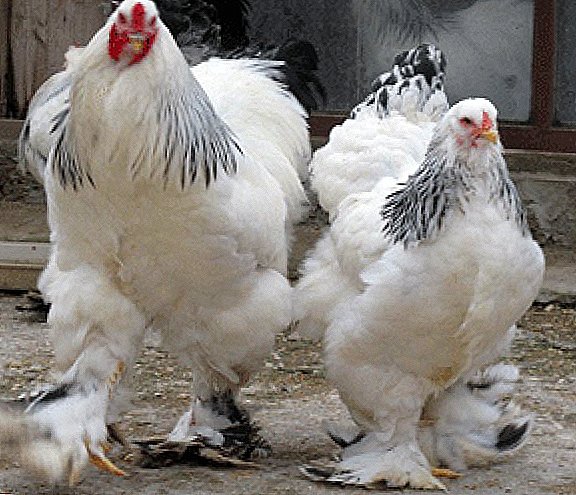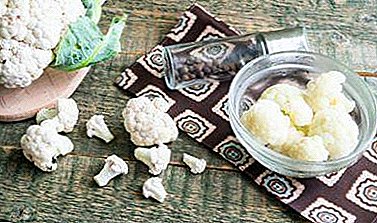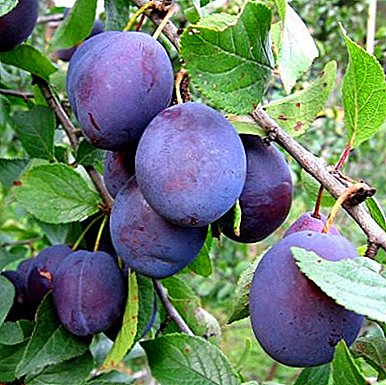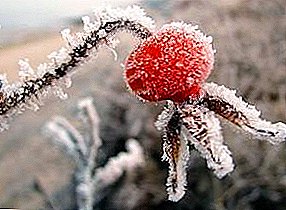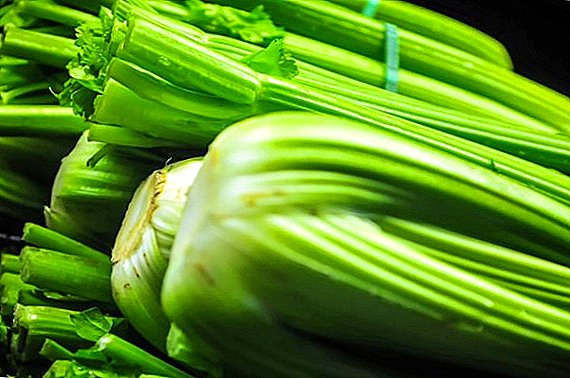 Celery it has been eaten by man since ancient times. The plant has a spicy aroma and an unusual taste, and thanks to its beneficial properties has won an honorable place in the diet of those who care about their health.
Celery it has been eaten by man since ancient times. The plant has a spicy aroma and an unusual taste, and thanks to its beneficial properties has won an honorable place in the diet of those who care about their health.
Did you know? Celery has been known since the days of ancient Greece, and if you believe the myths, it was the favorite vegetable of the goddess Aphrodite and the queen Cleopatra, and besides, Hippocrates used him actively to treat a variety of diseases.
Modern chefs also often use root vegetables for cooking various dishes. Vegetable is eaten raw, frozen, pickled and dried. Dried seeds of the plant are used to prepare celery salt, which allows you to emphasize the piquancy of dishes. Celery is considered to be no less popular among phytotherapists, who use it for the prevention and treatment of various diseases. Root crops are also used in their practice by cosmetologists and pharmacists.
Important! Despite the powerful therapeutic potential and a huge number of useful properties, people suffering from urolithiasis, you need to very carefully eat this root. The fact is that it causes the movement of stones, and this is a very dangerous and painful phenomenon, which in almost 99% of cases ends with hospitalization of the patient.
In total there are three types of celery - root, petiolate and leaf.
Description and photos of popular varieties of celery root
 Celery root has a round tasty fleshy root, so almost all of its varieties are widely used in cooking. The root crop has an unusual, but very pleasant aroma, which can be somewhat enhanced during heat treatment. Root celery is not inferior to ginseng in terms of its healing properties, but so far domestic plant growers stubbornly prefer leafy plant varieties. Partly, the low popularity of root celery is due to the fact that in our country you can find a very limited number of good varieties of root celery on sale.
Celery root has a round tasty fleshy root, so almost all of its varieties are widely used in cooking. The root crop has an unusual, but very pleasant aroma, which can be somewhat enhanced during heat treatment. Root celery is not inferior to ginseng in terms of its healing properties, but so far domestic plant growers stubbornly prefer leafy plant varieties. Partly, the low popularity of root celery is due to the fact that in our country you can find a very limited number of good varieties of root celery on sale.
Did you know? Celery root contains an impressive amount of active antioxidants that slow down the aging process and have a pronounced antitumor effect.
Let's consider with you the best celery root varieties that you can buy today in the domestic seed market.
"Prague giant"
The variety is distinguished by simplicity and undemanding in cultivation.. From the moment of planting the grains to the ground and before harvesting, no more than 120 days pass. The plants of the variety form giant root-crops, which have a tail-shaped form and tender light pulp. Root allocates a strong enough flavor and has a bright taste characteristics.
"Diamond"
The life cycle of plants of this variety does not exceed 150 days. The culture produces smooth rounded root crops, the weight of which on average reaches 200 g. The main feature of the variety is that even with long-term storage and heat treatment the pulp of the root crop retains its white color. The variety has a high leaf formation and resistance to bolting.  Cascade
Cascade
Root vegetables of this variety are ready to be harvested 150 days after emergence of shoots. A ripe vegetable has a round shape, white flesh and medium size. The variety has a low lateral location of the roots and resistance to bolting.
"Apple"
The leaves of the plant are collected in the outlet and emit a pleasant aroma. From the moment of planting seeds to the ground and before harvesting, it takes from 90 to 160 days, it all depends on weather conditions, agricultural technology and temperature conditions. Ripe root crops have snow-white flesh, a rounded shape and a smooth surface, their weight can vary from 80 to 140 g, which makes it possible to get up to 5 kg of crop per square meter. Vegetables of this variety contain an impressive amount of sugars. The grade differs in the increased resistance to diseases and wreckers.
"Gribovsky root"
The life cycle of plants of this variety ranges from 120 to 150 days. Root crops have bright flesh with a small amount of yellow spots, their weight can be from 65 to 135 g. The variety has an excellent flavor and aromatic palette, which allows it to be eaten both fresh and dried. 
"Albin"
From the moment of emergence and until full maturity of the fruit, no more than 120 days pass. The roots of this variety have a rounded shape and can reach up to 12 cm in diameter. In the upper part of the vegetable, its skin has a slightly greenish tint. The root system is well developed only in the lower part of the root, which does not appear above the ground. The vegetable has a white, flesh-resistant flesh.
"Strongman"
By the time of harvest, the weight of the root can reach 400 g. The fruit has a rounded shape, white flesh with a slight yellowish tinge, bright aroma, containing an impressive amount of mineral salts. Culture leaves form a semi-raised rosette. Lateral roots are well developed only in the lower part of the root.
"Anita"
The life cycle of plants of this variety reaches 60 days. During the growing season, the plant forms erect leaves on long petioles. On average, varieties of root crops reach 400 g, have a round or oval shape, snow-white flesh, which does not darken during heat treatment and fully retains its flavor. Culture is used both fresh and frozen. Growers appreciate the variety for disease resistance, bolting and excellent performance.
The best varieties of stalked celery
The varieties of celery celery are divided into green, needing bleaching, self-lightening and intermediate. Celery celery is a unique plant that firmly occupied a leading position among vegetables in terms of the content of minerals and vitamins. In addition, petiolate celery is the most delicious representative of its species, its varieties are able to please with a rich taste and aroma palette even the most demanding gourmets.
Important! It is better for pregnant women to refrain from eating stalked celery, especially in cases where the risk of abortion is high, since the substances that make up the plant increase the tone of the uterus, which can cause extremely undesirable consequences.
However, their main disadvantage in comparison with traditional varieties is low frost resistance, as well as a shorter storage period. The best varieties of stalked celery are listed below.
Self-bleaching varieties
"Gold"
The life cycle of a plant ranges from 150 to 160 days. Medium-long low ribbed plant petioles have a slightly curved shape and light green color. On average, the weight of a rosette of a variety can reach up to 830 g. When creating comfortable conditions, up to 5 kg of crop can be collected from one square meter.
"Malachite"
From the moment of germination and until the harvest, it takes from 80 to 90 days. The culture forms thick, light green, fleshy, slightly curved, with weak ribbing petioles, reaching a length of up to 35 cm. With all the conditions of cultivation observed, the weight of the rosette can reach 1.2 kg.
"Tango"
This is one of the most productive varieties. The life cycle of a plant variety can reach from 160 to 180 days. On the plant are formed bluish-green scapes, having a curved shape and not containing coarse fibers. On average, the weight of one outlet can reach up to 1 kg. The main advantage of culture is high aromatic characteristics. The plants of this variety for a long time retain their presentation and great taste. The culture is characterized by increased immunity to rust and tsvetuha.
Celery varieties that need bleaching
"Atlant"
From the beginning of the emergence of shoots to harvest, it takes an average of 150 to 170 days. On average, the petioles of the plant reach a length of about 45 cm, and the weight of the outlet can vary from 150 to 165 kg. When creating a comfortable environment for the crop, you will be able to harvest at least 3 kg of crop from one square meter.
"Men's Valor"
A very promising variety that is ready for harvest 150 days after germination. The culture has thick, large, light green scapes, with a slightly curved shape and slight ribbing. On average, the length of the petioles can vary from 45 to 55 cm. With all the agrotechnical standards observed, the outlet weight can reach 600 g.
"Pascal"
When growing this variety, be prepared for the fact that no more than 100 days pass from germination to harvest on average. On the culture, slightly curved dark green petioles form from 25 to 30 cm long are formed. The rosette weight of the variety reaches 450 g. Petioles of the variety have a pleasant aroma and are very juicy in taste. The culture is highly cold resistant. 
Common celery leaf varieties
WITHeldrey leaf does not have a root, as well as fleshy petioles. But it is the earliest among all types of celery, the greens of which are used to make salads, seasonings and even baking. Especially useful is the early celery, its sheets contain an impressive amount of vitamins and minerals. The plant will relieve avitaminosis, anemia, nervous breakdowns and prevent the development of osteoporosis. The most popular celery leaf varieties can be easily found on the shelves of any seed store.
Did you know? In order to preserve fresh celery leaves for longer than a week, they must be placed in a glass of water, and it must be placed in the door of the refrigerator.
"Cheerfulness"
One of the most productive varieties of leaf celery. From germination to harvest takes from 65 to 70 days. The culture is distinguished by its high aromatic characteristics and fast maturation. Powerful outlet form dense upright leaves. The culture has strong glossy leaves that you can cut at least twice a season. The variety is highly resistant to lack of moisture and sudden temperature drops. The leaves of the plant can be eaten both fresh and canned. 
"Zahar"
Medium late fruitful variety, the leaves of which, subject to growing conditions, can reach a height of 30 to 35 cm. The leaves of the plant have high organoleptic characteristics. The diameter of the leaf rosette of the culture reaches a maximum of 26 cm. The variety has tender, not hairy leaves and petioles of medium length. Leaves on one culture can form from 80 to 120 pieces.
"Sail"
High-yield celery leaf variety, forming a half-raised rosette. The culture has a short ripening period: no more than 90 days pass from germination to harvest. The variety has excellent taste and aroma characteristics and is distinguished by its absolute unpretentiousness in cultivation.
"Samurai"
The variety has a rapid pace of development: on average, no more than 82 days pass from germination to harvest. The culture is unpretentious, and therefore successfully cultivated on all types of soils. Leaves of a grade have the average sizes, form on hollow shanks and have green corrugated edge. The leaves of the culture are very fragrant and have a soft, delicate flavor. Culture can be used to prepare various dishes in fresh and dried form.
The useful properties of celery are endless. The plant is used in cooking, traditional medicine, pharmacology and cosmetology, and therefore grown bush on its own window sill will become a real source of health and longevity in your apartment.


